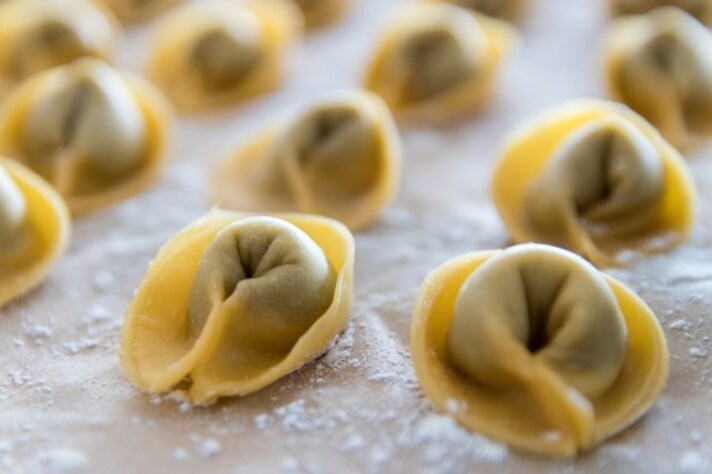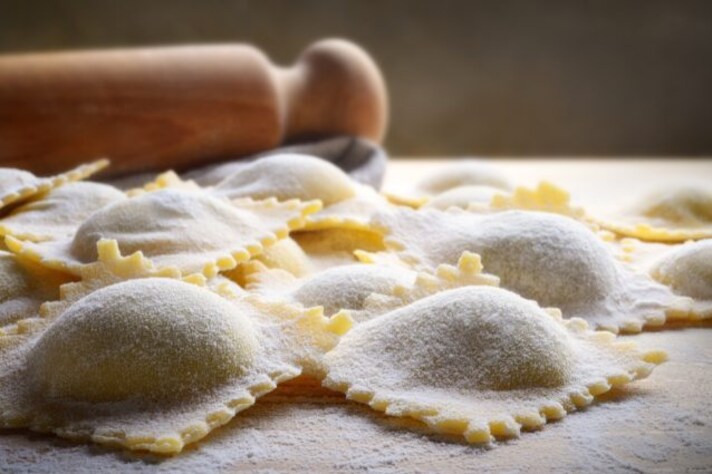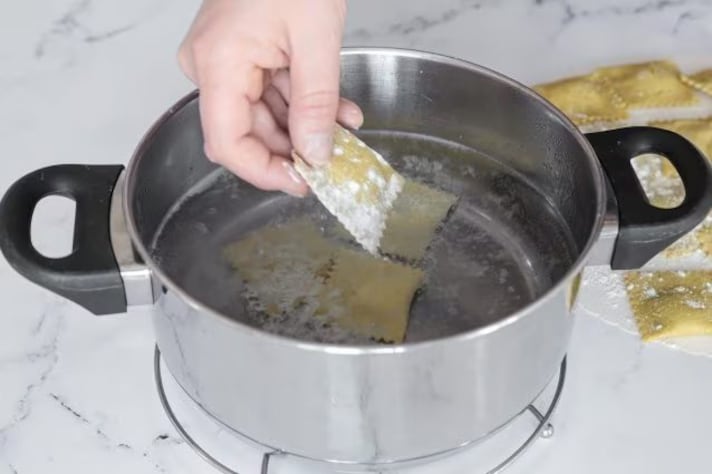
Homemade filled pasta—whether it’s ravioli, tortellini, or agnolotti—is a labor of love. You roll out delicate sheets of dough, spoon in just the right amount of filling, and seal each piece with precision. But once it’s ready, the worst thing you can do is let it sit. That extra time might seem harmless, but in reality, it’s a recipe for disaster. Resting filled pasta after it’s been assembled is like hitting pause on a soufflé in the oven—it doesn’t wait for you, and the results won’t be what you hoped for.
From soggy, burst-open pockets to a gluey, sticky mess, here’s why homemade filled pasta demands your immediate attention—and why time is never on its side.
The Filling Will Start to Weaken the Dough
Filled pasta is delicate, and the biggest threat to its structure is moisture. The moment the filling meets the dough, a slow but steady breakdown begins. Ingredients like ricotta, pureed vegetables, or meat mixtures naturally contain water. If left to sit, that moisture seeps into the pasta dough, making it soft, sticky, and prone to tearing. What started as a beautifully crafted raviolo can quickly turn into a sad, wet lump that falls apart before it even reaches the pot.
Pasta dough is designed to be pliable but firm—moisture ruins that delicate balance. And once the dough starts absorbing liquid, even the best-sealed edges won’t hold up when cooking. Instead of a neat pocket of filling, you’ll end up with a waterlogged disaster that dissolves in the pot.

Resting Means Trouble for Texture
Fresh pasta dough may feel silky when first rolled out, but the longer it sits, the stickier it becomes. This is especially true for filled pasta, where moisture from the filling and humidity in the air can turn a perfectly floured surface into a glue trap. If you’ve ever tried to move rested ravioli only to have them cling to the counter and tear apart, you know exactly what I mean.
The worst part? Once pasta sticks, there’s no real saving it. Extra flour won’t magically revive dough that’s gone too soft, and attempting to peel stuck pasta off a board usually results in deformed, broken pieces. If your pasta is already cut, filled, and sealed, the only place it should be going is straight into the pot.
Why Waiting Leads to Ruined Edges
A good filled pasta should hold its shape, keep its filling secure, and have a clean, firm edge. But let it rest too long, and the edges—no matter how well you’ve pressed them—start to lose their seal. This happens for a few reasons:
- First, as the dough softens from moisture, the seal weakens, making it easier for pasta to pop open when boiled.
- Second, air trapped inside the pockets expands when exposed to heat. If your pasta has been sitting and losing its structure, it becomes a ticking time bomb the moment it hits boiling water.
The result? Burst-open pasta with all the filling leaking out, leaving you with sad, deflated dough floating in your pot.

Flour Can’t Fix Everything
A common mistake cooks make is thinking that extra flour will solve the problem. It won’t. While flour can help prevent sticking in the short term, it doesn’t stop moisture from seeping into the dough. You might dust your pasta with more flour to keep it from gluing itself to the counter, but once it absorbs too much liquid, no amount of flour can save it from turning into a sticky, compromised mess. Instead of trying to "flour your way out" of pasta trouble, the real solution is simply cooking it immediately while the dough is still at its peak.
Fresh Pasta Should Taste Fresh
One of the best things about homemade pasta is its tender, delicate bite. Let it sit too long, though, and that signature texture changes. The dough becomes too soft before cooking, which means it won’t have the proper elasticity when boiled. Instead of perfectly al dente pasta with just the right chew, you get something that’s either too gummy or falls apart at the seams.
For chefs and pasta experts, fresh pasta is all about timing. It’s meant to go straight from the rolling pin to the pot (or at least be frozen if you need to save it). Letting it rest after filling defeats the entire point of making it fresh in the first place.
What You Should Do Instead
If you need to prep your pasta ahead of time, the solution isn’t resting—it’s freezing. Freezing immediately after assembly stops the moisture transfer and preserves the dough’s structure. Simply place your filled pasta on a floured tray, freeze them in a single layer, and transfer them to a bag or container once firm. When it’s time to cook, boil them straight from frozen—no resting, no sticking, no soggy disasters.

;Resize,width=767;)
